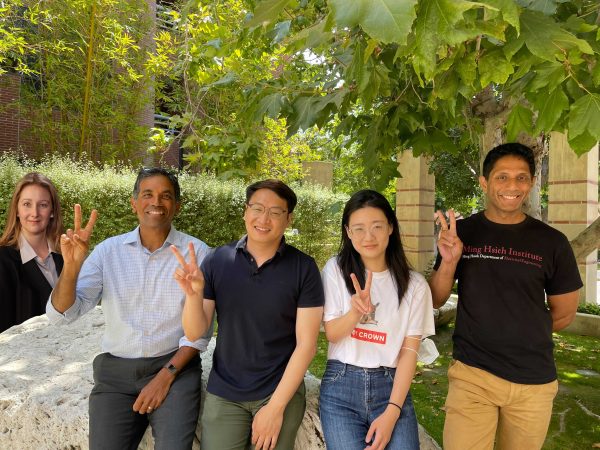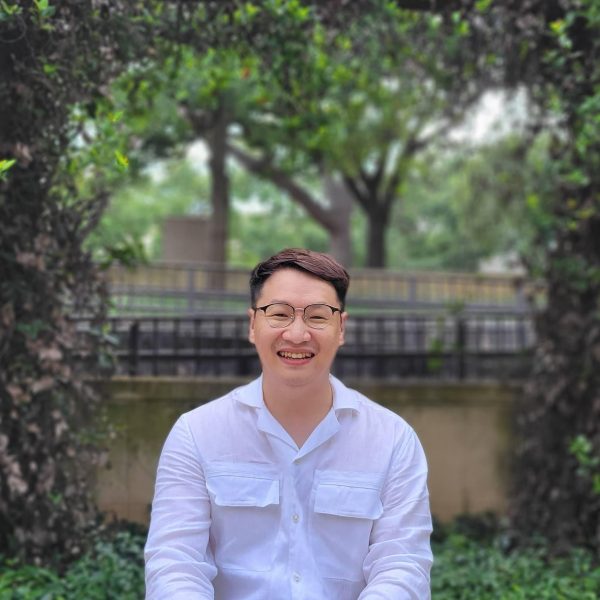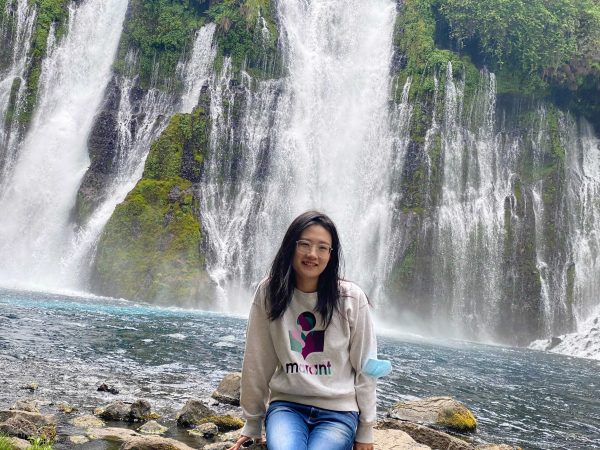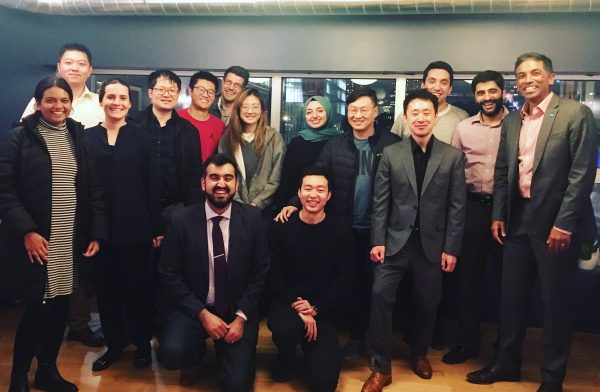By Mathieu Boudreau

This MRM Highlights Pick interview is with Ziwei Zhao and Yongwan Lim (co-first authors) and Krishna S. Nayak, researchers at the University of Southern California in Los Angeles, California. Their paper is entitled “Improved 3D real-time MRI of speech production”. It was chosen not only because the authors share code and data with their paper, but also because their code repository is well documented and they used the BART Toolbox in their implementations.
To discuss this Q&A, please visit our Discourse forum.
MRMH: Could you tell me a little bit about yourselves and your background?
Ziwei: I got my bachelor’s degree in biomedical engineering from China. My experience with MRI began at the time when I was an undergraduate. By that time I did an internship with an MRI company, and fell in love with MRI. Afterwards, I came to the US and got my master’s degree in electrical engineering. I had a chance to pursue my interests during my masters and got more experience on MRI reconstruction. I am also excited about MR physics and decided to continue exploring. Currently, I’m a second year PhD student at USC. I am eager to develop MR imaging techniques and to see it meet other researchers and radiologists’ needs, and speech is one of the applications that I am focusing on.

Yongwan: I’m currently a research scientist at the Dynamic Imaging Science Center at USC, where I work on some really exciting dynamic MRI applications at 0.55T. I got my masters from KAIST in South Korea, which was when I first got into the field of MRI. When I first learned about MRI, I was amazed by how the signal processing theory can be applied to such a wide variety of medical imaging applications. After that, I joined Krishna’s group at USC for my PhD studies, and to continue working in MRI.
Krishna: I am a professor of Electrical and Computer Engineering at USC, and have courtesy appointments in BME and Radiology. My path started with a BS in electrical engineering, computer science and applied math at Florida State University, followed by MS and PhD degrees in electrical engineering at Stanford. I first fell in love with MRI after taking Dwight Nishimura’s graduate class on MRI physics, and I joined his lab shortly afterwards. There are so many things about MRI that attracted me: the elegant math, the practical applications, the joy of working with images, potential to impact healthcare, and the fact that you can engage almost anyone with this topic. I’ve always focused somewhat on fast imaging and dynamic imaging, including the project that you have selected for this feature.
MRMH: Could give me a brief overview of your paper?
Yongwan: So, in this paper, we present a 3D real-time imaging technique for analysis of human speech production. This work is an extension of previous work we published, and in it we evaluate several innovative k-t sampling patterns by using 3D constraint image reconstruction. We show that by using an optimal sampling pattern, we can dramatically improve spatial and temporal resolution for 3D imaging applied to speech. We also demonstrated that some interesting phenomena relating to speech production can be captured using our optimized technique.

Ziwei: Yes, we demonstrated that our optimized 3D k-t sampling strategy is able to acquire with improved spatial and temporal sharpness, making it possible to capture the clear articulator boundaries even in the fast speech rate. We also demonstrated that it allows us to visualize the complex tongue shapes during alveolar consonant segments, which can be very subtle and difficult to image with other currently available techniques.
Krishna: To some extent, speech imaging is still uncharted territory; human speech is not easily repeatable, and lacks a convenient reference method. Gated approaches fail, because the vocal tract dynamics are not precisely repeatable, even in trained vocalists. The really exciting thing about this work is that our linguist co-authors saw, in these results, several unique dynamic 3D patterns in articulator shaping that they were expecting based on airflow mechanisms, and that was a very satisfying outcome.
MRMH: How would you say this work fits in with your broader research goals?
Yongwan: My personal research goal has always been to improve fundamental imaging trade-offs, especially for dynamic imaging. We have been working closely with linguists in our interdisciplinary research team, and we always seek insights from them in order to be able to tackle their unmet needs.
Ziwei: Beyond speech applications, I think the work we do can be useful for a variety of 3D applications, such as real-time wrist imaging and fetal imaging. I am happy to see this technique actually can have a broader impact on other applications.
Krishna: I agree with everything Yongwan and Ziwei have said. As a technology development group, we are driven to pursue diverse applications. Speech imaging is a great launchpad – many applications of real-time imaging have dynamic boundaries, and so what we learn from the speech application informs many others.
MRMH: What was the main motivation behind your decision to share code with your paper?
Yongwan: I think it’s natural to want to share code and data. I mean, why not? We have been collecting data at the hospital for many years, and processing data every week, so it is clear that we needed to write the code in such a way that people can use it in a scalable and repeatable way.
Ziwei: In my personal experience, when I was first learning about image reconstruction, I explored any published code that I could find at the time. And I found it extremely helpful. I therefore think it would be beneficial for a lot of trainees to have open-source code available to them. When I was preparing this GitHub repository, Krishna also suggested that we find some people who are not familiar with our code and get their feedback.
Krishna: I’m happy that this has become the new culture in our ISMRM community. Whenever possible, sharing code and sample data is the right thing to do, and helps move our field forward.

MRMH: How has this pandemic and/or lockdown impacted your research?
Yongwan: The pandemic was tough for everyone. As far as our research activities are concerned, we were not able to access the scanner at the hospital during most of the pandemic, meaning that we were not able to get new data. But because we had been collecting data for five years, I was able to work on processing the data that we already had, leading to a public dataset paper.
Krishna: It was very tough. For many people, just being isolated was very difficult. We suspended data-collection activities in March of 2020, and only resumed human data collection a couple of weeks ago. It was a long break, but one silver lining is that we had time and opportunity to curate datasets. Our speech team was already on the ball with regard to code and data sharing, but some of the other project teams in our lab used the time to clean up their software implementations so that they are ready to be shared when the time comes.
MRMH: Last thing, what do you enjoy doing when you’re not working?
Krishna: I have young kids, and they love hiking – California has beautiful outdoor spaces. We spent last weekend in Yosemite National Park. So that’s been our favorite activity, even during the pandemic, spending time outdoors.
Yongwan: During the pandemic, I had to figure out how to spend my free time by myself at home, so I purchased some game consoles that I used to play with when I was younger. I also read a lot of books and watched some TV shows.
Ziwei: I made a very good decision early on in the pandemic, namely to buy a treadmill for my apartment. I found it really useful for maintaining my physical fitness and mental health. I spent time on the treadmill while taking online courses, reading books, etc. Now, I just can’t wait to hang out with friends again soon.




